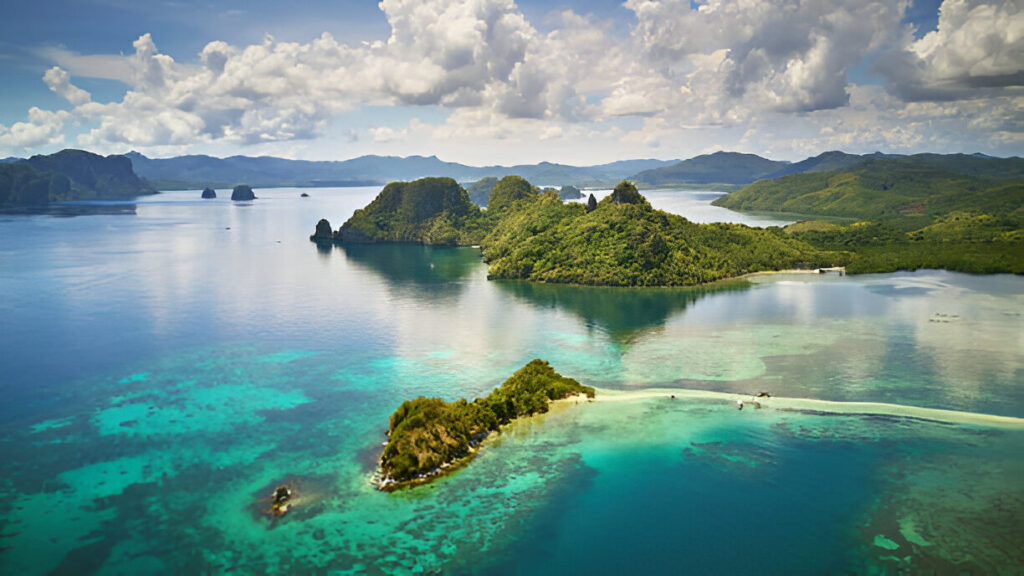Welcome to the Philippines, a mesmerizing archipelago in Southeast Asia that promises sun-soaked adventures, rich cultural experiences, and some of the warmest hospitality you’ll ever encounter. With over 7,000 islands, the Philippines offers a diverse array of landscapes, from pristine beaches and lush mountains to bustling cities and tranquil rural areas. This blog will take you on a journey through the country’s captivating history, vibrant culture, and the extraordinary spirit of its people. By the end, you’ll understand why the Philippines is not just a travel destination but a beloved home for many expatriates and digital nomads. 

The Historical Tapestry of the Philippines 
Pre-Colonial Era 
Before the arrival of European powers, the Philippines was a mosaic of diverse and sophisticated cultures. Early Austronesian-speaking settlers arrived in the archipelago around 3000 BC. These early Filipinos were adept seafarers and traders, establishing complex societies and engaging in trade with neighboring regions such as China, India, and the Malay Archipelago. They developed rich traditions, intricate social structures, and a deep connection with their environment.
In pre-colonial times, the Philippines was divided into independent barangays (villages) and sultanates, each with its own governance system. These communities were characterized by their autonomy and vibrant local cultures. The Visayans, Tagalogs, and Ilocanos were among the many groups that contributed to the rich tapestry of Filipino culture. The intricate weaving of these diverse influences laid the foundation for the unique cultural identity of the Philippines.
Spanish Colonization  ️
️
The arrival of Ferdinand Magellan in 1521 marked the beginning of Spanish colonization, which would last for over 300 years. Magellan’s arrival was followed by a prolonged period of Spanish rule, which introduced significant changes to the archipelago. Spanish influence permeated many aspects of Filipino life, from religion to architecture.
During this period, the Spanish introduced Christianity, which became deeply ingrained in Filipino culture. The Spanish established churches, schools, and a centralized system of governance. Iconic structures from this era, such as the San Agustin Church in Manila and the Fort Santiago in Intramuros, still stand as testaments to the country’s colonial past.
The Spanish also established the Manila-Acapulco galleon trade route, which connected the Philippines with the Americas. This trade route facilitated cultural and economic exchanges, bringing new goods, ideas, and traditions to the archipelago. The Spanish era left an indelible mark on Filipino culture, influencing language, cuisine, and customs.

American Period 
The American period began in 1898, following the Spanish-American War, when the Philippines was ceded to the United States. This era brought significant changes to the country’s political, social, and economic landscape. The Americans introduced a new education system, which included English as a medium of instruction. The influence of American culture is still evident in many aspects of Filipino life today, from the legal system to popular entertainment.
During the American period, the Philippines experienced rapid modernization. Infrastructure projects, such as roads, bridges, and public buildings, transformed the country’s landscape. The Americans also established public health programs and educational institutions, contributing to improvements in living standards.
The struggle for independence continued during the American period, with various movements advocating for self-governance. The culmination of these efforts was the Philippine Declaration of Independence on July 4, 1946, when the country officially became a sovereign nation. The post-independence era marked a new chapter in Philippine history, characterized by both achievements and challenges.
Post-Independence Era
The post-independence era has been a period of significant transformation for the Philippines. The country faced numerous challenges, including political instability, economic fluctuations, and natural disasters. Despite these obstacles, the Philippines has demonstrated resilience and adaptability.
The People Power Revolution of 1986 was a pivotal moment in Philippine history. This peaceful revolution, which led to the ousting of President Ferdinand Marcos, showcased the democratic spirit and collective strength of the Filipino people. The revolution marked the beginning of a new era of political reform and democratic governance.
In recent decades, the Philippines has made strides in economic development and modernization. The country has become a hub for business and tourism, attracting international investors and visitors. The vibrant economy, coupled with a rich cultural heritage, continues to shape the nation’s identity and global presence.
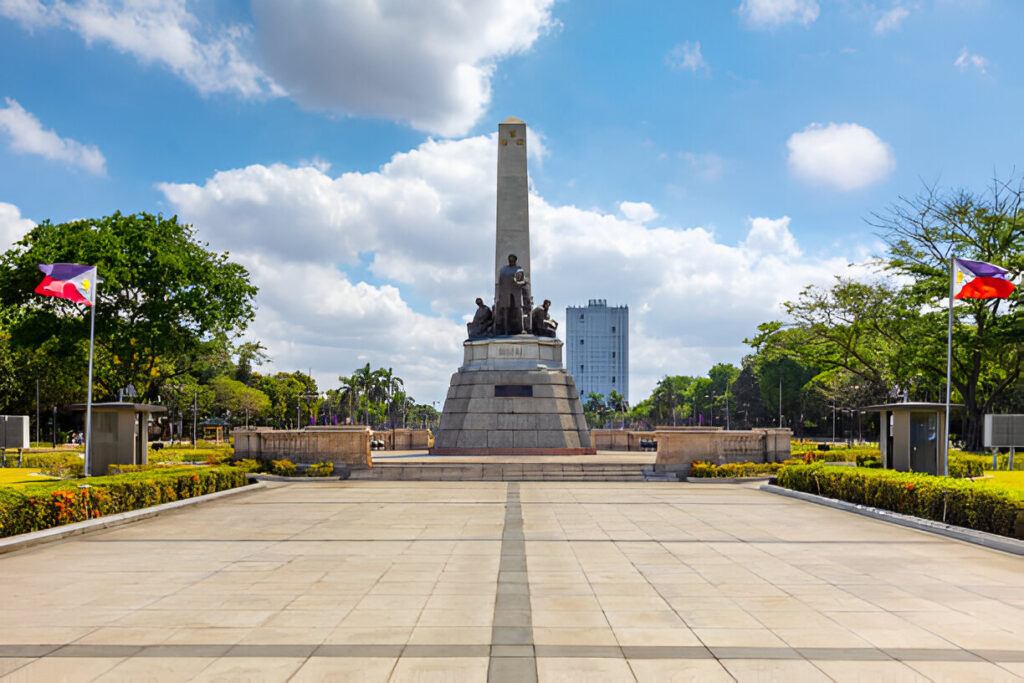
The Rich Cultural Heritage of the Philippines 
Diverse Influences 
The Philippines is a cultural melting pot, with influences from indigenous, Asian, Spanish, and American cultures. This rich blend of traditions and customs creates a unique cultural landscape that is both diverse and vibrant.
- Languages: The linguistic diversity of the Philippines is remarkable, with over 175 spoken languages and dialects. Filipino (based on Tagalog) and English are the official languages, but regional languages such as Cebuano, Ilocano, and Hiligaynon play an important role in daily life. This linguistic variety reflects the country’s multicultural heritage and adds depth to its cultural identity.

- Religion: Christianity, particularly Roman Catholicism, is a central element of Filipino culture. The Philippines has the largest Catholic population in Asia, and religious festivals and traditions are an integral part of life. In addition to Catholicism, there are significant Muslim communities in Mindanao and indigenous spiritual practices that contribute to the country’s diverse religious landscape.


- Cuisine: Filipino cuisine is a delightful fusion of various culinary traditions. Dishes such as adobo (a savory stew), sinigang (a tangy tamarind soup), and lechon (roast pig) showcase the rich flavors and diverse influences of Filipino cooking. The use of local ingredients, bold flavors, and unique cooking techniques make Filipino food both distinctive and delicious.

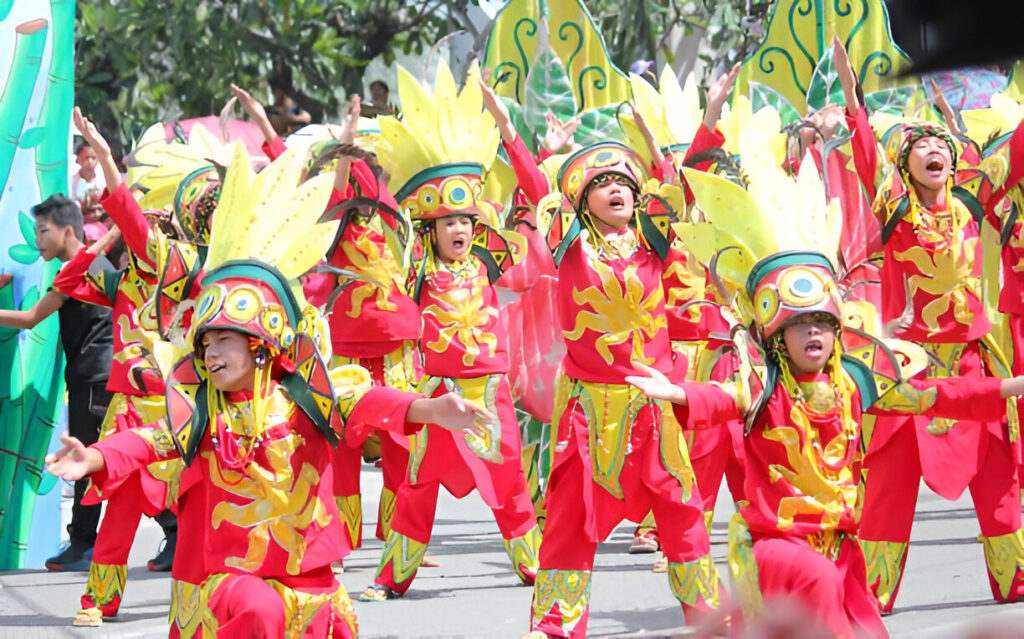
Festivals and Traditions 
Filipino festivals, or fiestas, are vibrant celebrations that reflect the country’s cultural diversity and traditions. These festivals are characterized by colorful parades, lively music and dance performances, and delicious food. Here are some of the most notable festivals:
- Sinulog Festival (Cebu City): Held in January, the Sinulog Festival is a grand celebration honoring the Santo Niño (Child Jesus). The festival features a lively parade with traditional dances, elaborate costumes, and vibrant floats. It is one of the largest and most famous festivals in the Philippines, attracting thousands of visitors each year.

- Panagbenga Festival (Baguio City): Known as the “Flower Festival,” Panagbenga takes place in February and celebrates the blooming season in Baguio, a city known for its cooler climate and beautiful gardens. The festival includes colorful flower floats, street dancing, and various cultural activities.

- Pahiyas Festival (Lucban, Quezon): Celebrated in May, the Pahiyas Festival is a creative display of local produce and artistic decorations. Residents adorn their homes with vibrant and intricate displays of fruits, vegetables, and other agricultural products, showcasing their gratitude for a bountiful harvest.


Arts and Crafts 
The Philippines has a rich tradition of arts and crafts that reflects its cultural heritage. Traditional crafts include intricate weaving, pottery, and carving. Here are some examples of Filipino artistry:
- Textiles: Filipino textiles are known for their beauty and craftsmanship. The tinalak fabric of the T’boli people is made from abaca fibers and features intricate patterns that hold cultural significance. Similarly, the ikat weaving technique, used by the Ifugao and other indigenous groups, creates stunning patterns through a complex process of dyeing and weaving.

- Pottery: Pottery is a traditional craft in the Philippines, with various regions specializing in different styles. The burnay pottery of Ilocos Norte is known for its durability and distinct designs. In contrast, the banga or clay jars of the Kalinga people are used for ceremonial and practical purposes.

- Carving: Wood carving is a traditional art form among various indigenous groups in the Philippines. The intricate designs of the bulul statues from the Ifugao and the elaborate masks of the Mangyan people showcase the skill and creativity of Filipino carvers.

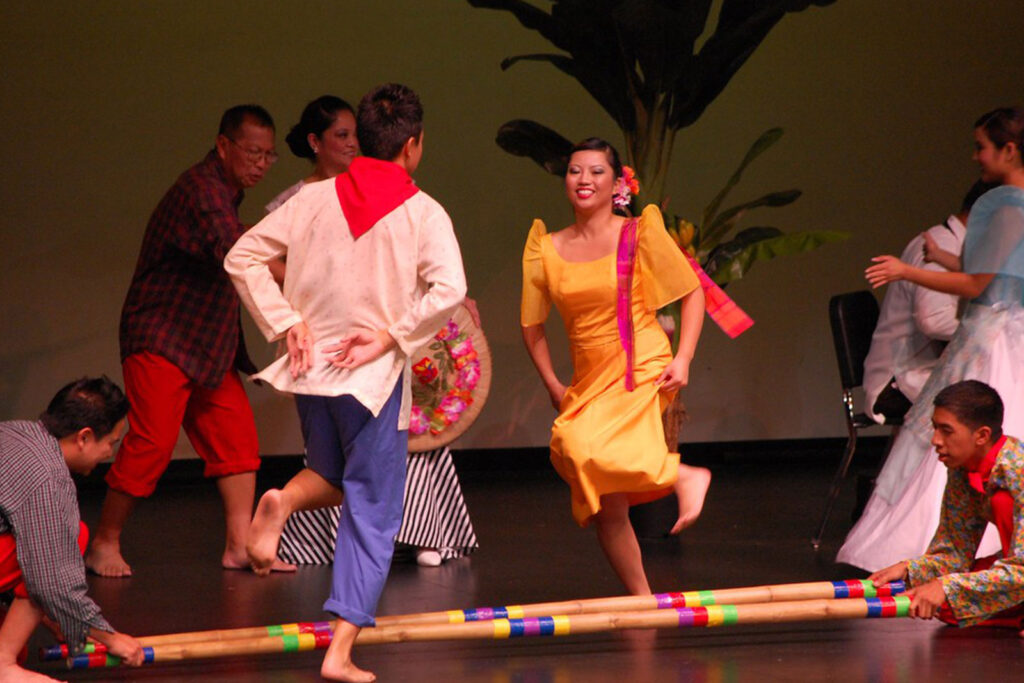
Music and Dance 
Filipino music and dance are integral to the country’s cultural identity. Traditional dances such as the tinikling and carinosa are performed during festivals and special events. These dances reflect the grace, rhythm, and creativity of Filipino performers.
- Tinikling: The tinikling is a traditional dance that mimics the movements of the tikling bird as it hops between bamboo poles. Dancers step in and out of the poles, which are rhythmically tapped together, creating an intricate and lively performance.

- Cariñosa: The carinosa is a traditional Filipino dance that originated during the Spanish colonial period. It is characterized by its graceful movements and the use of a fan or handkerchief as a prop. The dance expresses themes of romance and courtship.

Modern Filipino music, or OPM (Original Pilipino Music), reflects the evolving cultural landscape of the country. Artists like Lea Salonga, Gary Valenciano, and Sarah Geronimo have gained international recognition, showcasing the talent and diversity of Filipino musicians. 
Why People Love to Travel and Expat in the Philippines 
Warm and Friendly People 
One of the most remarkable aspects of the Philippines is its people. Filipinos are renowned for their warmth, hospitality, and friendliness. Whether you’re exploring a bustling city or a remote island, you’ll be greeted with genuine smiles and open arms. The Filipino concept of kapwa (shared identity) reflects the deep sense of community and interconnectedness that characterizes the culture.
As expat and travel enthusiast [Emily Smith] shared her experience, “From the moment I arrived in the Philippines, I felt like I was welcomed into a big, loving family. The people’s kindness and generosity made my stay truly unforgettable.” 
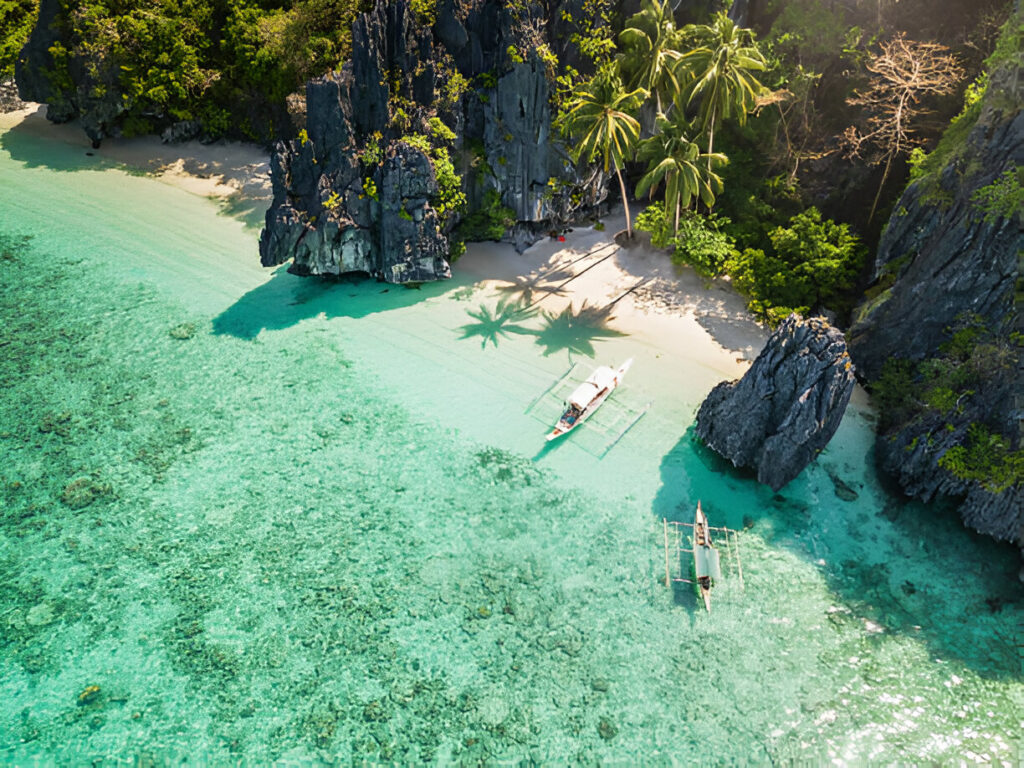
Beautiful Natural Landscapes 
The Philippines boasts some of the most stunning natural landscapes in the world. From the white sand beaches of Boracay and Palawan to the terraced rice fields of Banaue, the country offers a diverse array of breathtaking sceneries. Nature enthusiasts and adventure seekers will find endless opportunities for exploration, whether it’s snorkeling in crystal-clear waters, hiking through lush rainforests, or simply relaxing on a pristine beach.
[Mark Johnson], a frequent traveler, commented, “The natural beauty of the Philippines is unparalleled. Every island and region has its own unique charm, and there’s always something new to discover. It’s a paradise for anyone who loves the outdoors.” 
Affordable Living Costs 
For expatriates and digital nomads, the Philippines offers a relatively low cost of living compared to many Western countries. Housing, food, and transportation are generally affordable, making it an attractive destination for those looking to stretch their budget without compromising on quality of life. Many expatriates find that they can enjoy a comfortable and fulfilling lifestyle in the Philippines without breaking the bank.
[Anna Williams], a digital nomad, shared her thoughts: “Living in the Philippines has been an incredible experience. The cost of living is much lower than in my home country, and I’ve been able to enjoy a higher quality of life while working remotely. The beautiful surroundings and friendly people are just the cherry on top.” 
Thriving Expat and Digital Nomad Communities 
The Philippines is home to vibrant expat and digital nomad communities that offer support, networking opportunities, and social activities. Cities like Cebu, Davao, and Manila have become popular hubs for expatriates, offering coworking spaces, networking events, and social gatherings. These communities provide a sense of belonging and connection for those living far from home.
[John Davis], an expat living in Cebu, remarked, “Joining the expat community here has been fantastic. There are so many events and meetups where you can connect with like-minded individuals. It’s great to have a support network and to share experiences with others who understand what it’s like to live abroad.” 
Visa Requirements and Digital Nomad Considerations 

Visa Requirements for the Philippines 
Traveling to the Philippines as a tourist typically requires a visa, though some nationalities are eligible for visa-free entry for up to 30 days. For longer stays or different purposes, such as work or study, you’ll need to apply for the appropriate visa. Here’s a general overview of visa requirements:
- Tourist Visa: Most visitors can enter the Philippines visa-free for up to 30 days. Extensions are available if you wish to stay longer. Make sure your passport is valid for at least six months beyond your planned departure date.
- Student Visa: If you plan to study in the Philippines, you’ll need a Student Visa (9(F)) or an Alien Student Visa. This visa is typically issued for the duration of your studies and requires acceptance into a recognized educational institution.
- Work Visa: For employment in the Philippines, you’ll need a Work Visa (9(G)). This visa requires sponsorship from a Philippine employer and approval from the Bureau of Immigration. Ensure that you have all necessary documents, including an employment contract and proof of qualifications.
- Special Resident Retiree Visa (SRRV): This visa is designed for retirees who wish to live in the Philippines. It offers various benefits, including indefinite stay and exemption from certain taxes. Applicants must meet specific financial requirements and age criteria.

Digital Nomad Visas and Remote Work 
The Philippines is increasingly becoming a popular destination for digital nomads due to its affordable living costs, beautiful landscapes, and vibrant expat communities. Although there isn’t a specific digital nomad visa, remote workers can live and work in the country using existing visa options, such as tourist or work visas.
Digital nomads should consider the following tips:
- Visa Extensions: If you’re on a tourist visa, you can apply for extensions to stay longer. Be aware of the maximum duration you can stay and plan accordingly.
- Work Permits: If you plan to work for a local company or engage in business activities, ensure you have the appropriate work permit or visa.
- Internet Connectivity: Many cities and towns in the Philippines offer reliable internet access, which is essential for remote work. Check the connectivity options in your chosen location to ensure you have a stable internet connection.
- Community and Networking: Join local expat and digital nomad groups to connect with others and get valuable insights about living and working in the Philippines. Networking can help you find coworking spaces, social events, and local resources.

The Heart of the Philippines 
The Philippines is a country of contrasts and harmonies, where history and modernity coexist, and diverse cultures blend seamlessly. From the stunning natural landscapes and vibrant festivals to the warm-hearted people and thriving expat communities, the Philippines offers a unique and enriching experience for travelers and expatriates alike.
· The beauty of the Philippines lies not only in its picturesque landscapes but also in the warmth and generosity of its people. Filipinos are known for their hospitality, friendliness, and strong sense of community. This genuine spirit makes the Philippines a place where visitors feel welcomed and valued, creating lasting memories and connections.
· As Sophia Martinez, a frequent visitor to the Philippines, beautifully put it: “The Philippines is more than just a travel destination; it’s a place where you feel like you’re part of something special. The people’s kindness and the country’s natural beauty make every visit unforgettable.”





